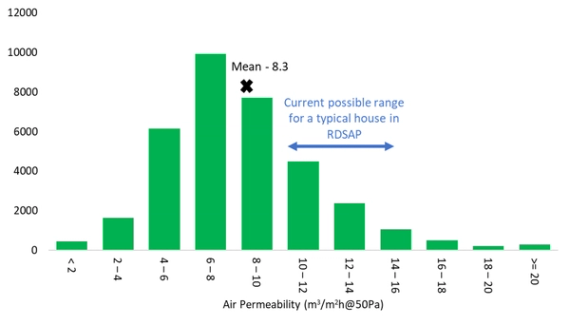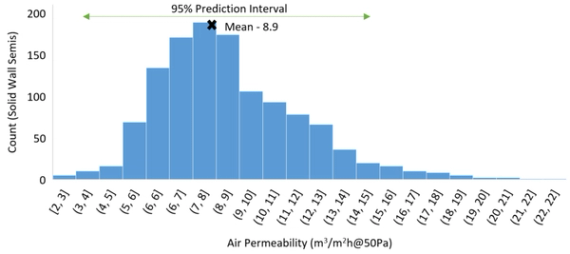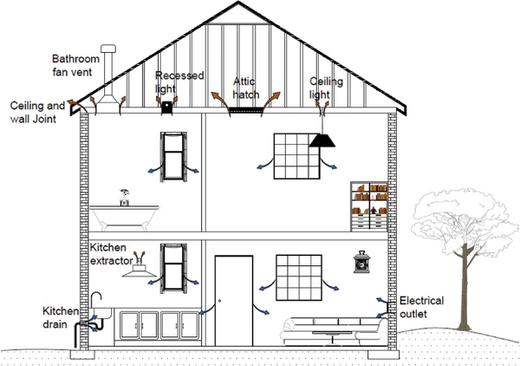Article
Unpacking RdSAP 10: Key improvements for more accurate EPCs
The recent introduction of RdSAP 10 brings a suite of long-overdue improvements that significantly enhance how we model the heat loss of buildings. Among these, two stand out as particularly impactful: the ability to incorporate measured airtightness values and the shift to estimating solid wall U-values based on wall thickness.

The Impact of Measured Airtightness
One of the most significant advancements in RdSAP 10 is the inclusion of measured airtightness. Historically, RdSAP has relied on a rather conservative rough estimate for the airtightness value, typically falling within the 10-15 m²/h.m² range. However, in situ measurements paint a rather different picture. BTS’ extensive database of Pulse measurements, encompassing tens of thousands of results, shows a mean average airtightness of 8.3 m²/h.m², which is notably better than the assumed range.

The variability in airtightness performance in situ is remarkable. Even for buildings that appear visually similar, accurately predicting airtightness without direct measurement is simply not possible. The distribution of performance for solid-walled, semi-detached buildings below highlights just how diverse real-world conditions are. The ‘95% prediction interval’ on the chart shows the range with which the airtightness of a house of a similar type could be estimated to a 95% degree of confidence.

By allowing the input of in-situ airtightness measurements, RdSAP 10 will more accurately reflect the actual performance of individual buildings. A measured airtightness will improve the EPC rating for the majority of properties, with a likely impact of ranging from 1 to 3 points depending on the particular conditions for each building. Furthermore, this move to in-situ measurement should serve as a catalyst for a deeper understanding of ventilation sufficiency in homes, grounded in precise knowledge of their airtightness.
More Accurate Solid Wall U-values
Another significant change in RdSAP 10 is the change in how solid wall U-values are calculated. Instead of using a single default value for a wall type, the U-value will now be determined by wall thickness. This is a welcome development, as previous studies have demonstrated the highly variable performance of these walls, and that they had an average U-value 24% & 42% lower (better) than previously assumed.
Our own experience at BTS corroborates these findings; we frequently observe that older, thicker walls exhibit lower heat loss than conventional wisdom might suggest. Our case study of in-situ measurement of buildings on Liverpool Docks, for instance, provides a compelling example of this.
The move to incorporate wall thickness in U-value calculations should lead to a more accurate representation of the reduced heat loss associated with these thicker walls. However, solid walls remain particularly variable in terms of their thermal performance, with their exact makeup often impossible to determine by a visual survey. Therefore, a crucial next step would be to promptly amend the RdSAP conventions to actively promote the wider use of U-value measurements, mirroring the recent integration of airtightness measurements. This will ensure that our understanding of building fabric performance continues to evolve based on the most accurate data available.
Final Thoughts
RdSAP 10 signifies a crucial advancement—a much-needed update aligning the methodology with contemporary housing, technologies, and energy systems. While imposing increased requirements on assessors, it simultaneously enhances the relevance and utility of EPCs within a global context prioritising net-zero objectives.
At Build Test Solutions, we are dedicated to assisting assessors through this transition by providing tools and technologies that facilitate precise, evidence-based assessments. Adopting RdSAP 10 is not merely about fulfilling regulatory obligations; it represents an embrace of a more intelligent and impactful role in the UK’s energy transition.



